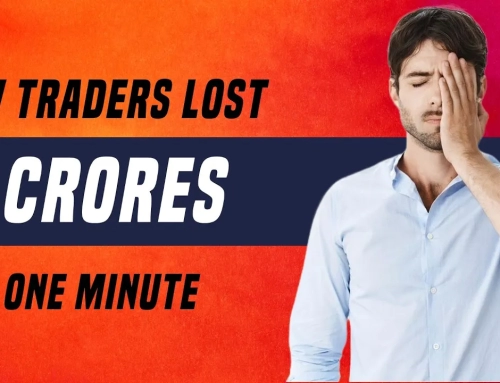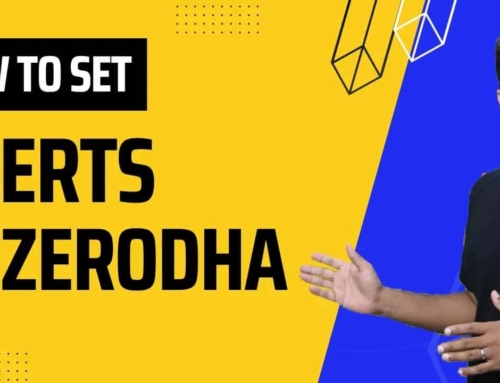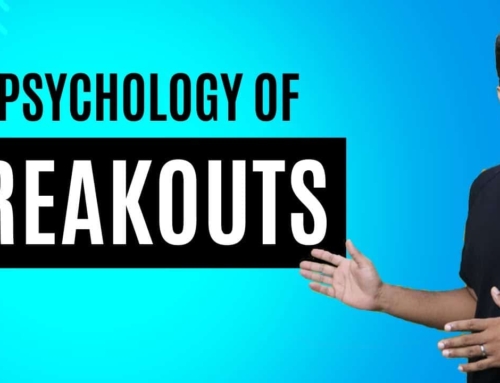What are Headwinds and Tailwinds?
The world of the stock market is filled with jargon and whenever some beginner comes here, they get confused, don’t understand the language that people are talking here, and it’s very hard for them to comprehend as to what is really going on. So what we are doing is making a series of videos that we’re calling jargon busters, where we will take one jargon at a time and demystify, simplify that using plain simple English using some practical examples.
In today’s video, we will focus on a pair of jargons called headwinds and tailwinds. Now these terms are actually very common in India. You would read them in the newspaper or in the annual reports, in the management commentary, or you would hear them on TV where anchors are talking about a company or a sector that is facing headwinds.
So what exactly are headwinds and tailwinds? Well, these terms originally come from the aviation industry. When an airplane is flying and all of a sudden it encounters wind coming from the opposite direction, then these winds are called headwinds because they’re coming towards the head of the plane.
On the other hand, if the plane encounters wind that is blowing in the same direction as that of the airplane, then these winds are called tailwinds. As you can see, headwinds make it harder for the airplane to move and tailwinds make it easier for the airplane to move forward. This is exactly how these terms are interpreted in the world of finance and stock market as well.
So headwinds are factors that make it harder for a business to make a profit and these factors can be new government regulations or the rising cost of raw materials or changing consumer preferences. So, anything that can potentially impact the profitability of the business in the negative way is called a headwind.
Now a good example of this will be oil prices.When oil prices went up about a 100 dollars a barrel, a lot of industries that depend on oil as raw material saw their profits decline because their margins went down and these are the industries that actually got impacted because of that.
So people would say that these industries are facing headwinds. Now the opposite of headwinds are tailwinds which are factors that make it easier for a business to make a profit. These factors can be reduced competition from other countries or other companies or falling raw material prices, or a sudden rise in the consumer demand.
Now, a perfect example of a tailwind was during the peak of the coronavirus crisis when the whole world was grappling with the pandemic. The pharmaceutical industry was actually facing the tailwind of increased demand because there was so much demand for medicines and all the pharmaceutical products that the stocks of these pharmaceutical companies actually went through the roof because of these tailwinds.
So guys, that is it. That is in essence, what headwinds or tailwinds are and I hope that the next time you hear somebody talking about these terms, you will know exactly what they are.
In today’s session, we will understand Max Pain theory.
Before we talk about the subject let us make a few things clear.
Number one, for you to understand this, you need to have some basic understanding of options and without that you will not be able to understand this video.
Number two, this theory only works for stocks and indices that are trading in the futures and options segment. We have about 200 stocks in the F&O segment and hence this theory can be applied there.
Finally, the most important thing is that for this theory to work, that stock or index has to be highly liquid which means that it has to have a lot of trading activity. With that said, let’s try to understand the gist of this theory.
The theory says that there are two types of traders, option buyers and option sellers. Now, option buyers are people like you and me who do not have a lot of money. I mean, we do have money, but not a lot and we also don’t also have any insider information in the market. For the lack of a better word, this theory assumes that option buyers are nothing but gamblers.
Now, on the other hand, we have option sellers who are usually the big institutions, people with a lot of money, a lot of inside information, world-class infrastructure, etc. The theory assumes that these are the guys that are the casinos in this equation. As per this theory, Option buyers are gamblers and option sellers are the casinos.
Basically, this is a zero-sum game which means one person’s gain is another person’s loss and the core philosophy of Max Pain theory is just like casinos, option sellers will always win in the long run. Based on this philosophy, the Max Pain theory says that any stock or index will gravitate towards the price where the losses with the option bias are maximum.
This is where the option buyers will experience maximum pain. This might sound a mean way of looking at the world to say that Option buyers are always losers and options sellers are the winners, but that is a simplistic assumption that this theory has made about the real world.
Let’s talk about where can we find max pain related information. There are many websites that show Max Pain and currently, I’m using niftytrader.in, but you can find this information on almost any website or app related to Options. Now when you go to these websites, this is how max pain is usually represented and the calculation behind this chart is done a little differently by each website, but that is not very important.
What is important is how do we interpret this chart? The first thing that you need to know is that when you see this chart, you have to see from an option seller’s perspective, not the option buyers. The x-axis here is very simple and it just shows the price of the stock of the index.
In this example, we are using NIFTY and so the x-axis shows the different price points of NIFTY. Now the Y axis shows the loss that the options sellers will incur. You will also notice that there are two colors that are used here, red and blue. Let’s start with red first and so the red bars right here, they show the loss to Put Option Sellers if NIFTY went down.
Currently, say, NIFTY is at 16,300 and so if NIFTY starts to fall, the market starts to fall and then you will see that the Put Option Sellers will incur more loss. In the same way, the blue bars represent a loss to the Call Option Sellers. If the market went up, say, to 17,000, 18,000 or 19,000, this is how much loss the Call Option Sellers will have to incur all. So based on this information, Max Pain theory says where is the price point, where the loss to the put option sellers and the call option sellers combined will be the least. The price at which the total maximum loss to option sellers is the least will be the price at which the option buyers will experience maximum loss or maximum pain.
Based on that, the theory predicts that the expiry will happen somewhere close to that price and that is the logic behind this Max Pain theory.
However, there are a few things which I want to confirm. Number one is Max Pain theory is not a magic formula and it doesn’t always work. The second thing is that it’s always backward looking and any big event at the market can substantially change the way the graph looks at any point of time and you should be aware of that.
Finally, just like any technical indicator, it should be paired with other factors to make your trading related decisions. Anyway, we will discuss many of these aspects in the future videos, but in this video, I hope that at least you understood the core concept of max pain.
If you want to test your understanding of max pain or test your understanding of options or stock market in general, we have created a bunch of quizzes that I will highly encourage you to take and test your knowledge.
The link for the same is https://www.vrdnation.com/stock-market-quizzes/



![What is Virtual Contract Note [Zerodha]](https://www.vrdnation.com/wp-content/uploads/2023/10/maxresdefault-virtual-note-500x383.jpg)



Leave A Comment